Confirmed Invited speaker
Lucien Saviot, LICB, FrancePeter Torök, SCELSE, Singapore
Hervé Rigneault, FRESNEL institute, France
Alberto Bilenca, Ben-Gurion University, Israel
Francesca Palombo, University of Exceter, UK
Robert Prevedel, EMBL, Germany
Pascal Ruello, IMMM, France
Aurélien Crut, iLM, France
Arnaud Arbouet, CEMES, France
Elsa Cassette, LuMIN UMR 9024 Universite Paris-Saclay, ENS Paris-Saclay, CNRS, CentraleSupélec, France
Eva Weig, Universität Konstanz, Germany
Valentina Giordano, ILM, France
Birgit Stiller, Max Planck Institute, Germany
Luc Thévenaz, EPFL, Switzerland
Thomas Dehoux, iLM, France
Philip Russel, Max Planck Institute, Germany
Kerry Vahala, CALTECH, USA
Daniel Kimura, C2N, France
Nathalie Lidgi-Guigui, LSPM, France
Lukas Jakob, University of Cambridge, England
Bernard Perrin, INSP, France
Gregory Hartland, University of Notre Dame, USA
Silvia Boccato, IMPMC, France
Kareem Elsayad - Medical University of Vienna, Austria
Ivan Favero, MPQ, univ Paris Diderot
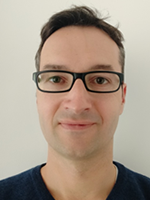 |
Arnaud ARBOUET CEMES-CNRS Arnaud Arbouet is a CNRS research director working at CEMES-CNRS (Toulouse, France) in the Nano-Optics and Nanomaterials for Optics group. He is working on the optical response and ultrafast dynamics of nanoscale systems with time-resolved optical and electron microscopies. He has developed a high-brightness ultrafast Transmission Electron Microscope and recently co-founded the CNRS-Hitachi joint laboratory for ultrafast Transmission Electron Microscopy. Coherent Ultrafast Transmission Electron Microscopy: Applications to Nano-optics and Nanomechanics* Keywords: Ultrafast Transmission Electron Microscopy, nano-optics, electron energy gains, acoustic vibrations Summary: Nanosized systems have optical properties that can differ significantly from their bulk counterpart due to the existence of optical resonances such as surface plasmons in metallic nanoparticles or Mie modes in high refractive index nanostructures. These excitations have extremely short lifetimes (fs-ns) and pattern the optical near-field on subwavelength scales. Ultrafast Transmission Electron Microscopes (UTEM) combining sub-picosecond temporal resolution and nanometer spatial resolution have emerged as unique tools for investigations at ultimate spatio-temporal resolution [1,2]. In this talk, I will report on the development of a high-brightness UTEM and discuss its potential in nano-optics and nanomechanics [3,4]. In particular, I will report on Electron Energy Gain Spectroscopy experiments performed in a UTEM that allow mapping the optical near-field at the nanometer scale and discuss the potential of electron diffraction and holography experiments performed with femtosecond electron pulses to explore the vibrational dynamics of nanoscale systems. References: [1] 4D Electron Microscopy, Imaging in Space and Time, 2009 Ahmed H Zewail and John M Thomas (Cambridge) [2] Ultrafast Transmission Electron Microscopy : fundamentals, instrumentation and applications Arnaud Arbouet, Giuseppe M. Caruso, Florent Houdellier Advances in Imaging and Electron Physics, Advances in Electronics and Electron Physics, 207, Elsevier, 2018, 1076-5670, 2018 [3] Development of a high brightness ultrafast Transmission Electron Microscope based on a laser-driven cold field emission source F. Houdellier, Giuseppe Mario Caruso, Sébastien Weber, Mathieu Kociak and Arnaud Arbouet Ultramicroscopy, 186, 128-138, 2018 [4] High brightness ultrafast transmission electron microscope based on a laser-driven cold-field emission source: principle and applications G.M. Caruso, F Houdellier, S Weber, M Kociak, A Arbouet Advances in Physics: X 4 (1), 1660214, 2019 |
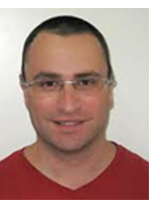 |
Alberto BILENCA Ben-Gurion University of the Negev, Israel Alberto Bilenca is an Associate Professor in the Ben-Gurion University of the Negev, Israel. His research interests are in optical imaging and diagnosis, with focus on stimulated Brillouin microscopy. Stimulated Brillouin scattering microscopy for mechanical imaging of cells and organisms Keywords: Stimulated Brillouin scattering, biomicroscopy, bioimaging, biomechanics Summary: The mechanical properties of biological systems, such as cells and organisms, play a major role in their function and development. A well-established technique for assessing biomechanics is atomic-force microscopy; yet, it requires physical contact with the sample. Recently, Brillouin microscopy has been developed for biomechanical imaging with no sample contact or need for external mechanical stimuli. Whereas most of the developmental efforts in Brillouin microscopy have been using spontaneous Brillouin scattering as the contrast mechanism, I will introduce here a new approach for high sensitivity and specificity, noncontact, biomechanical-contrast imaging based on stimulated Brillouin scattering (SBS). The physical working principles of the method and its use in biological settings will be described and discussed. References: Itay Remer, Roni Shaashoua, Netta Shemesh, Anat Ben-Zvi, Alberto Bilenca, “High-sensitivity and high-specificity biomechanical imaging by stimulated Brillouin scattering microscopy,” Nat Methods 17, 913-916 (2020). Itay Remer, Lear Cohen, Alberto Bilenca, “High-speed continuous-wave stimulated Brillouin scattering spectrometer for material analysis,” J Vis Exp 127, 55527 (2017). |
 |
Silvia BOCCATO IMPMC – CNRS – Sorbonne University After completing my Physics Engineering degree, I obtained my Ph.D. in 2017 at the European Synchrotron Radiation Facility, working on the determination of melting curves and liquid structure of transition metals such as nickel and cobalt with x-ray absorption spectroscopy. In my post-doc at the Institut de Minéralogie, de Physique des Matériaux et de Cosmochimie, I started working on the determination of sound velocities of iron alloys under pressure by means of picosecond acoustics. Picosecond Acoustics: a Laser Pump-Probe Technique for the Determination of Thermo-Elastic Properties of Solids and Liquids at High Pressure and High Temperature Keywords: picosecond acoustics, elastic constants, sound velocity, high pressure, high temperature Summary: Picosecond acoustics is a time-resolved optical pump-probe technique that allows studying the propagation of acoustic echoes in a large variety of samples at different pressure and temperature conditions. With this technique we can access melting curves, the complete set of elastic moduli for single crystals and longitudinal velocities for polycrystalline samples. I will illustrate the importance of these experiments for Earth and planetary science, providing examples of studies with a direct interest in these fields, including measurements on iron and iron alloys, metallic liquids, hydrogen and deuterium. Finally, I will present the recent development we performed at IMPMC consisting in the coupling of picosecond acoustic to a laser heating system. This allows to reach pressure and temperature conditions relevant for planetary interiors. References: Decremps et al. Ultrasonics 56, 129–140 (2015) Goncharov et al. Physical Review B 95, 214104 (2017) Edmund et al. Minerals 10, 214 (2020) |
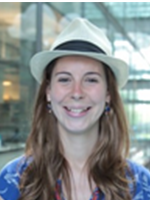 |
Elsa CASSETTE Laboratoire Lumière, Matière et Interfaces (LuMIn, UMR 9024, Université Paris-Saclay, ENS Paris-Saclay, CNRS, CentraleSupélec) E. Cassette received her PhD from the University Paris VI in 2012 for her work at the LPEM laboratory (ESPCI, France) on the synthesis and properties of colloidal II-VI and I-III-VI semiconductor core/shell nanocrystals. She then joined the group of Gregory Scholes as a postdoctoral researcher (Toronto, Canada and Princeton, USA) to study the ultrafast exciton dynamics in 2D II-VI semiconductor nanoplatelets. She is a CNRS researcher since 2016. Using femtosecond optical spectroscopy to study the ultrafast dynamics in semiconductor nanomaterials: relaxation, recombination and coherences Keywords: hot exciton relaxation, exciton-phonon interactions, electronic and vibrational coherences, pump-probe spectroscopys Summary: Interaction of light with photoactive materials results in several dynamical processes that are essential to understand in order to develop performant optoelectronic devices based on light-energy conversion. In this lecture we will introduce two kinds of ultrafast optical spectroscopy tools that allow a deep investigation of the different processes occurring from a few tens of femtoseconds (10s 10-15 s) to a few nanoseconds: femtosecond transient absorption and two-dimensional electronic spectroscopy [1,2,3]. In particular, we will discuss the ultrafast hot exciton relaxation in colloidal semiconductor nanostructures and the effect of internal and external vibrational modes (phonon bottleneck effect, coupling with surface ligand vibrational modes, etc…) [4]. We will also introduce the notion of electronic and vibrational coherences and their potential role in efficient energy transfer, charge transfer & exciton dissociation [5,6]. References: [1] R. Berera, R. van Grondelle and J.T.M. Kennis, Ultrafast transient absorption spectroscopy: principles and application to photosynthetic systems. Photosynth. Res. 2009 101: 105-118. [2] D.M. Jonas, Two-dimensional Femtosecond Spectroscopy, Annu. Rev. Phys. Chem. 2003, 54: 425-463. [3] E. Cassette, J.C. Dean and G.D. Scholes, Two-Dimensional Visible Spectroscopy For Studying Colloidal Semiconductor Nanocrystals. Small 2016, 12: 2234-2244. [4] C. Villamil Franco, G. Trippé-Allard, B. Mahler, C. Cornaggia, J.-S. Lauret, T. Gustavsson and E. Cassette, Exciton Cooling in 2D Perovskite Nanoplatelets: Rationalized Carrier-Induced Stark and Phonon Bottleneck Effects. J. Phys. Chem. Lett. 2022 13: 393-399. [5] E. Cassette, R.D. Pensack, B. Mahler and G.D. Scholes, Room-temperature exciton coherence and dephasing in two-dimensional nanostructures. Nat. Commun. 2015 6:6086. [6] C.A. Rozzi, S.M. Falke, N. Spallanzani, A. Rubio, E. Molinari, D. Brida, M. Maiuri, G. Cerullo, H. Schramm, J. Christoffer and C. Lienau, Quantum coherence controls the charge separation in a prototypical artificial light-harvesting system. Nat Commun. 2013 4: 1602. |
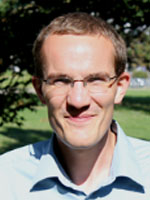 |
Aurélien CRUT Institut Lumière Matière (Lyon) Aurélien Crut studied physics at Ecole Polytechnique (France). His PhD and postdoctoral studies (respectively at the Kastler-Brossel laboratory in Paris and at Delft Technical University in the Netherlands) were devoted to biophysical experiments at the single-molecule level. In 2007, he was appointed Assistant Professor and joined the FemtoNanoOptics group at the Institut Lumière Matière of University Lyon 1, specialized in optical investigations of nanomaterials. His present research is focused on the modeling of the optical, vibrational and thermal properties of nano-objects. Vibrational and Cooling Dynamics of Metal Nanoparticles: Optical Investigations and Modeling Keywords: metal nanoparticles, time-resolved spectroscopy, vibration modes, single-particle spectroscopy, interfacial phonon transfer, plasmonics Summary: Nano-objects exhibit discrete vibrational modes and fast cooling dynamics, which can both be monitored in the time domain using ultrafast optical pump-probe spectroscopy. This approach enables fundamental investigations of the laws governing elasticity and heat transfer at the nanoscale. Experimental investigations have in particular demonstrated the surprising ability of continuum elasticity models to reproduce the vibrational frequencies of metal nanoparticles and highlighted the crucial role played by interface thermal resistances on their cooling kinetics. Performing time-resolved experiments on single nanoparticles rather than on ensembles allows even more detailed comparisons between the measured and modeled vibrational and cooling dynamics, and is currently leading to a better understanding of vibrational damping and of the transient optical response induced by nanoscale energy transfer phenomena. References: 1) A. Crut, P. Maioli, N. Del Fatti and F. Vallée Optical absorption and scattering spectroscopies of sin-gle nano-objects Chem. Soc. Rev. 43, 3921 (2014). 2) A. Crut, P. Maioli, N. Del Fatti and F. Vallée Acoustic vibrations of metal nano-objects: time-domain investigations Phys. Rep. 549, 1 (2015). 3) F. Medeghini, A. Crut, M. Gandolfi, F. Rossella, P. Maioli, F. Vallée, F. Banfi and N. Del Fatti Control-ling the Quality Factor of a Single Acoustic Nanoresonator by Tuning its Morphology Nano Lett. 18 5159 (2018). 4) R. Rouxel, M. Diego, F. Medeghini, P. Maioli, F. Rossella, F. Vallée, F. Banfi, A. Crut, and N. Del Fatti Ultrafast Thermo-Optical Dynamics of a Single Metal Nano-Object J. Phys. Chem. C 124 15625 (2020). |
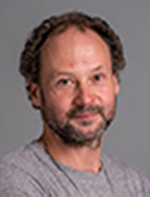 |
Arnaud DEVOS IEMN CNRS UMR8520, 41 Bd Vauban 59046 Lille Cedex France Dr Arnaud Devos has been senior researcher in French National Center for Scientific Research (CNRS) since 1998 at IEMN in Lille. Current research interests include ultrafast acoustics applied to solid state physics and nanophysics. He is the inventor of the so-called Colored Picosecond Ultrasonic (APiC) technique and he published more than 40 papers and filed 5 patents. He received the CNRS bronze medal in 2008. In 2010 he co-founded the startup MENAPiC to develop and transfer to market the APiC technology. Picosecond Acoustics: from lab to fab Keywords: picosecond acoustics, thickness control, thin-film, elasticity, adhesion, RF filters Summary: The main goal of this lecture is to give an outlook of the numerous and various applications that the picosecond acoustic technique has met in the industrial world. The story started a few years after its invention by Prof. H. Maris. Indeed, Rudolph Technologies (now ONTO) rapidly realized that such a technique was the missing one in the industrial world for controlling the thickness of thin metal films. That was the beginning of the Metapulse® story, a full automatized tool dedicated to microelectronics applications and that can be found in any production company worthy of the name. More recently, picosecond acoustics and especially its variant based on laser-tuning, the so-called Colored Picosecond Acoustics or APiC, have been shown to be very useful for many other industrial applications in topics as different as space mirror, radio-frequency filtering, flat and smart glass, solar cells,… References: [1]. A. DEVOS, “Colored Ultrafast Acoustics: from fundamentals to applications”, Ultrasonics 56, pp. 90-97 (2015) DOI 10.1016/j.ultras.2014.02.009 |
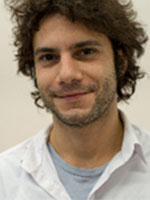 |
Kareem ELSAYAD Medical University of Vienna Research of the Elsayad Lab centers on developing optical microscopy and spectroscopy approaches to better elucidate microscopic scale mechanical, structural, and dynamic properties of biological matter. These are used to provide insight into their anatomical, functional, and potential medical relevance. They work on diverse model organisms and human donor samples, and collaborate with clinics to explore the translational potential. |
 |
Inès GHORBEL Thales Research & Technology Inès Ghorbel holds a PhD. from Université Paris Saclay in optomechanics. She has gained expertise in oscillators and conducted theoretical and experimental analysis of nanosized optomechanical oscillators. Currently, she is a research engineer at Thales Research and Technology, France where she continues to work on optomechanical oscillators, alongside other research fields such as photonic crystal quantum photon sources and fiber sensors. Review on some applications of opto-mechanics Keywords: Cavity optomechanics, sensors, oscillators Summary: Bringing a product to the market from fundamental research is hazardous path and interaction between academic research and private sector might help that. In this talk, through the example of research in the field of cavity optomechanics and Brillouin and Rayleigh scattering at Thales Research and Technology, we will explore some applications of optomechanics. By comparing the state of the art with the expected specifications, we shall consider the way ahead to make applied optomechanics come true. References: I. Ghorbel, F. Swiadek, R. Zhu, D. Dolfi, G. Lehoucq, A. Martin, G. Moille, L. Morvan, R. Braive, S. Combrié, and A. De Rossi , "Optomechanical gigahertz oscillator made of a two photon absorption free piezoelectric III/V semiconductor", APL Photonics 4, 116103 (2019) https://doi.org/10.1063/1.5121774 |
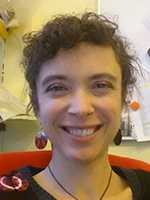 |
Valentina GIORDANO CNRS, Institut Lumière Matière, UMR 5306, Villeurbanne Former Beamline Scientist at the Inelastic X ray scattering beamline of ESRF, VG has been recruited at the CNRS in 2011. Expert in phonon dynamics, the focus of her research is the understanding pf phonon dynamics and thermal transport in amorphous materials, complex crystals and nanostructured materials. Since 8 years she has launched a research line on nanocomposite and nanophononic materials, where she investigates phonons using top of the art techniques at large scale facilities, such as synchrotrons, nuclear reactors and Free Electron Lasers, as well as laboratory spectroscopy techniques. Inelastic x-ray and neutron scattering for investigating phonon dynamics and thermal transport Summary: Thermal transport in materials is assured by electrons and atomic vibrations, so that in semiconductors and insulators these latter are the dominant heat carriers. The quasi-particle of the atomic vibrations, the phonon, is characterized by a wavelength and a velocity v, carrying an energy ћ=2v/ over the distance travelled during its lifetime, before undergoing a scattering process. Understanding thermal transport requires then the knowledge of the individual properties of the phonons and the understanding of the scattering mechanisms that they undergo and which limit their lifetime. Phonons responsible for thermal transport at room temperature are usually the ones with THz energies and sub-nanometric wavelengths. These phonons are only accessible in a large phase space by inelastic X ray and neutrons scattering techniques, which are thus the tools of choice for getting such microscopic knowledge. Other, laser-based, techniques are needed to access phonons at lower energies, with wavelengths in the tens and hundreds of nanometers. A short panoramic will be given, with a focus on X ray and neutrons inelastic scattering, illustrating their limits and advantages and how such experiments can allow to understand thermal transport in a variety of systems. |
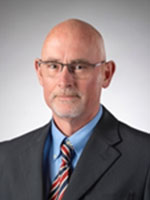 |
Gregory HARTLAND University of Notre Dame Prof. Hartland obtained a Ph. D. from UCLA in 1991, and performed postdoctoral studies at the University of Pennsylvania before joining the Department of Chemistry and Biochemistry at the University of Notre Dame in 1994, where he is currently a Full Professor. Prof. Hartland is a Fellow of the AAAS, the American Chemical Society and the Royal Society of Chemistry, and is the Deputy Editor for the Journal of Physical Chemistry C. Ultrafast Studies of Single Plasmonic Nanostructures Keywords: plasmons, single particle, ultrafast, acoustic vibrations Summary: Metal nanostructures display several types of resonances. In the visible and near-IR regions there are plasmon resonances that involve coherent motion of the electrons. In addition, the vibrational modes of metal nanostructures give rise to low frequency resonances in the gigahertz to terahertz range. These different resonances suffer energy losses from internal effects and from interactions with the environment. The goal of this talk is to describe the energy relaxation process due to the environment. Even though plasmons and acoustic vibrations arise from different physics, environmental damping is dominated by radiation of waves. The way the damping depends on the nanostructure size and the properties of the environment will be discussed, as well as examples of applications enabled by the control of radiation damping, such as the use of metal nanostructures as nanoscale mass balances. |
 |
Lukas JACOB NanoPhotonics Centre, Cavendish Laboratories, University of Cambridge, UK Lukas Jakob is a final year PhD candidate at the NanoPhotonics Centre at the University of Cambridge supervised by Prof. Jeremy J. Baumberg. His research is focused on exploring molecular vibrations in plasmonic nanocavities with ultrafast surface-enhanced Raman scattering. He completed his undergraduate studies in Nanoscience at the University of Tübingen, Germany. Molecular Optomechanics in Plasmonic Nano- and Picocavities Keywords: Nanocavity, picocavity, nanoparticle-on-mirror, SERS, molecular optomechanics Summary: Extreme plasmonic confinement in self-assembled nanoparticle-on-mirror structures allows experimental access to molecular vibrations of <100 molecules. The intense optical fields in the cavity excite vibrations and unveil nonlinear effects such as vibrational pumping, optomechanical coupling and collective vibrations interrogated via surface-enhanced Raman scattering (SERS). Further enhancement is produced by atomic protrusions of the metal (‘picocavities’) focusing the light in volumes <1 nm3 and probing a single molecule. This lecture will introduce the optical properties of the nanoparticle-on-mirror structure and its various applications in SERS. In particular, we will explore the interaction of light in the cavity with molecular vibrations described by molecular optomechanics. References: Extreme nanophotonics from ultrathin metallic gaps, Nature Materials 18, 668 (2019); DOI: 10.1038/s41563-019-0290-y Pulsed molecular optomechanics in plasmonic nanocavities:..., PRX 8, 011016 (2018); DOI : 10.1103/PhysRevX.8.011016 Single-molecule optomechanics in picocavities, Science 354, 726 (2016); DOI: 10.1126/science.aah5243 |
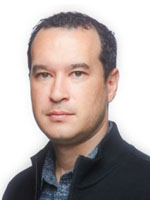 |
Daniel LANZILLOTTI KIMURA Centre de Nanosciences et de Nanotechnologies (C2N) – CNRS – Université Paris Saclay Daniel Lanzillotti Kimura obtained his Ph.D. in 2009 from both the Instituto Balseiro in Argentina and the Institute of Nanosciences in Paris. His field of research is nanophononics and nanomechanics. He was a postdoctoral researcher in the Bariloche Atomic Center in Argentina, the University of California at Berkeley in the USA, and the Laboratory for Photonics and Nanostructures in France. Since 2015, he is a tenured researcher of the CNRS in France, and in 2016 he was awarded an ERC Starting Grant. Optophononics: beyond the few GHz regime Keywords: acoustic phonons, nanomechanics, optomechanics, nanocavities, nanophononics Summary: Advances in material science and fabrication techniques enabled the fabrication of samples with nanometric dimensions where it is possible to confine photons and phonons (GHz-THz frequencies) in a single resonant cavity. In this lecture, I will describe the behavior of a plethora of devices able to control the interactions between light, sound, and charge at the nanoscale. I will introduce some strategies to generate, manipulate and detect ultra-high frequency acoustic phonons both in the time and spectral domains. References: [1] O. Ortiz et al., “Topological optical and phononic interface mode by simultaneous band inversion,” Optica, vol. 8, no. 5, pp. 598–605, May 2021, doi: 10.1364/OPTICA.411945. [2] M. Esmann et al., “Brillouin scattering in hybrid optophononic Bragg micropillar resonators at 300 GHz,” Optica, vol. 6, no. 7, pp. 854–859, juillet 2019, doi: 10.1364/OPTICA.6.000854. [3] O. Ortiz et al., “Fiber-integrated microcavities for efficient generation of coherent acoustic phonons,” Appl. Phys. Lett., vol. 117, no. 18, p. 183102, Nov. 2020, doi: 10.1063/5.0026959. [4] A. Rodriguez et al., “Fiber-based angular filtering for high-resolution Brillouin spectroscopy in the 20-300 GHz frequency range,” Opt. Express, vol. 29, no. 2, pp. 2637–2646, Jan. 2021, doi: 10.1364/OE.415228. |
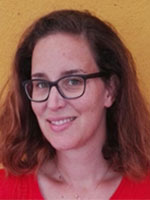 |
Natalie LIDGI-GUIGUI : LSPM (Laboratoire de Sciences des Procédés et des Matériaux) Université Sorbonne Paris Nord I am associate professor at the University Sorbonne Paris Nord. I am a specialist of the growth, optical and electronic properties of metallic nanoparticles. I have developed my research in the field of molecular plasmonics where I have used metallic nanoparticles for the detection of biomarkers and contaminants in complex media. For this I have studied different ways of surface functionalization including some activated by the plasmons. Sensing with plasmons and Raman scattering Keywords: Plasmons, Raman scattering, Surface Enhanced Raman Scattering, biosensing, sensing Summary: During this course I will start by briefly presenting the physics of surface and localised plasmons. I will then present how these localized surface plasmons can be used to enhance Raman scattering. In a second part I will discuss the notion of molecular detection based on plasmons and Raman spectroscopy. I will consider in particular the detection of biomolecules in complex media such as blood or urine. For this I will introduce very basics notions of molecular biology and surface chemistry. |
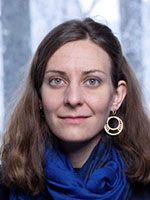 |
Laure MERCIER DE LÉPINAY Aalto University I did my PhD in Grenoble in Institut Néel on (experimental) optomechanics and force measurement. Four years ago, I started working in Aalto University in Finland, where I am now since 2022 an Assistant Professor. I have mainly worked there with suspended aluminum membranes coupled to microwave cavities, using multimode devices and multitone driving to implement mechanical squeezing and entanglement. Multimode optomechanics Keywords: Multimode optomechanics, mechanical squeezing, mechanical entanglement Summary: Multimode optomechanical systems allow for more complex interactions between mechanical or optical degrees of freedom than single-mode optomechanical systems. Manipulating these interactions, it is possible to engineer effective non-reciprocal couplings, prepare and detect fragile entangled mechanical states. In this lecture, I will review what can be done using multitone driving schemes in optomechanics and in particular show how to use such a scheme to detect mechanical steady-state entanglement [1]. References: [1] L. Mercier de Lépinay, C. F. Ockeloen-Korppi, M. J. Woolley, and M. A. Sillanpää, Quantum mechanics-free subsystem with mechanical oscillators, Science 372, 625 (2021) |
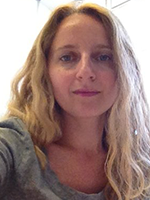 |
Francesca PALOMBO University of Exeter, UK I am Associate Professor of Biomedical Spectroscopy in the School of Physics and Astronomy and affiliate investigator of the Living Systems Institute (LSI) at the University of Exeter, UK. My research is focused on developments of Brillouin, Raman and FTIR spectroscopy methods for applications to biology and medicine. I am interested in physical and chemical aspects of biological systems at a molecular level, and impairments in disease, e.g. cancer, dementia. High frequency biomechanics probed by Brillouin spectroscopy Keywords: biophotonics, acoustics, light scattering, biomolecules, elastic moduli Summary: Mechanical properties of biological systems such as cells and tissues are critical to their function, and impairment can lead to disease occurrence. Macroscopic elastic moduli provide a good description of the function of tendons and bones. However, the microscopic realm remains largely elusive due to the lack of experimental tools to target that domain in a non-destructive and viable manner. Brillouin light scattering (BLS) spectroscopy can fill that gap by giving access to a new spatio-temporal regime which is complementary to that of Raman and FTIR based techniques. It provides information on the propagation of spontaneous acoustic waves at high frequency probing viscous and elastic properties on a micro-scale in a non-destructive and contactless manner. This lecture will cover emerging BLS spectroscopy applications to the biomedical sciences. References: Bailey et al. Science Advances, 6: abc1937 (2020). Palombo and Fioretto, Chemical Reviews, 119: 7833-7847 (2019). Palombo et al. Analyst, 139: 729-733 (2014). Palombo et al. Journal of the Royal Society Interface, 11: 101 (2014). |
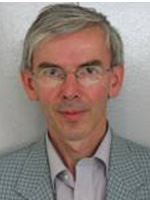 |
Bernard PERRIN Institute of Nanosciences in Paris UMR CNRS 7588, Sorbonne University, France Bernard Perrin, is an emeritus CNRS research director who worked on nonlinear acoustics, phonon interactions and phonon transport. He contributed to the development of many aspects in the field of picosecond acoustics. Among others, he worked on the design, the realization and the use of emitters and detectors of coherent acoustic waves in the Terahertz range. He successfully demonstrated that these new devices could be used to measure the mean free path of such ultra-high coherent phonons wave packets Using picosecond ultrasonics to study sound absorption and phonon lifetimes in the GHz to THz frequency range Keywords: picosecond acoustics, Phonon-phonon interaction, phonon mean free path, time resolved Brillouin scattering Summary: Picosecond ultrasonics is a technique that scans a wide frequency spectrum from a few GHz to THz depending on the systems, materials and configurations. However, the penetration depth of acoustic waves is not very well-known in this frequency range although this information would be very useful for applications involving high frequency acoustic waves or vibrations such as magneto acoustics [1], phonon imaging, optomechanics. Picosecond acoustics offers many opportunities to achieve accurate measurements of this quantity. During this lecture, I will give an overview about the studies and measurements of attenuation of longitudinal acoustic phonons in different systems (thin films [2-3], bulk materials [4-7], acoustic cavities ), different materials (semi-conductors[6,8,9], glasses [2,10], quasicrystals [4], polymers) and using different experimental configurations (echoes, time-resolved Brillouin scattering [12], resonant excitation of cavities [13]…). References: 1. Scherbakov, AV, et al. Phys. Rev. Lett. 102, 117204 (2010) 2. T.C. Zhu, H.J. Maris, J. Tauc, Phys. Rev. B 44, 4281 (1994) 3. Hao H-Y, Maris H.J., Phys. Rev. B63, 224301 (2001) 4. J.-Y. Duquesne, B. Perrin, Phys. Rev. B68, 134205 (2003) 5. Daly B,. et al. Phys. Rev. B80, 174112 (2009) 6. R. Legrand, et al. Phys. Rev. B95, 014304 (2017) 7. G. Rozas, et al. Phys. Rev. Lett. 102, 015502 (2009) 8. Y-C Wen, et al. Appl. Phys. Lett. 99, 051913 (2011) 9. T.-H. Chou, et al. Phys. Rev. B 100 (2019) 094302 10. W. Chen, et al. Phil. Mag. B70, 368 (1994) 11. P. Emery, A. Devos, Appl. Phys. Lett. 89, 191904 (2006) 12. P. I. Bozovic, et al. Phys. Rev. B 69, 132503 (2004) 13. C. Lagoin, et al. Phys. Rev. B. Rapid Communications, B99, 060101 (2019) |
View other Speakers abstracts